
Caerulea the Blue Tit
The story of her nest in Spring 2022
This is the record of a nest in Spring 2022. A nest box with a camera has been set up to record this wonder of nature in Warwick Bridge. Caerulea means 'Blue' in Latin or ‘Blue of the sky’. The most recent posts will be at the top of this page.
10th June
'That's all folks'.
They last two leave the nest and a new adventure begins.
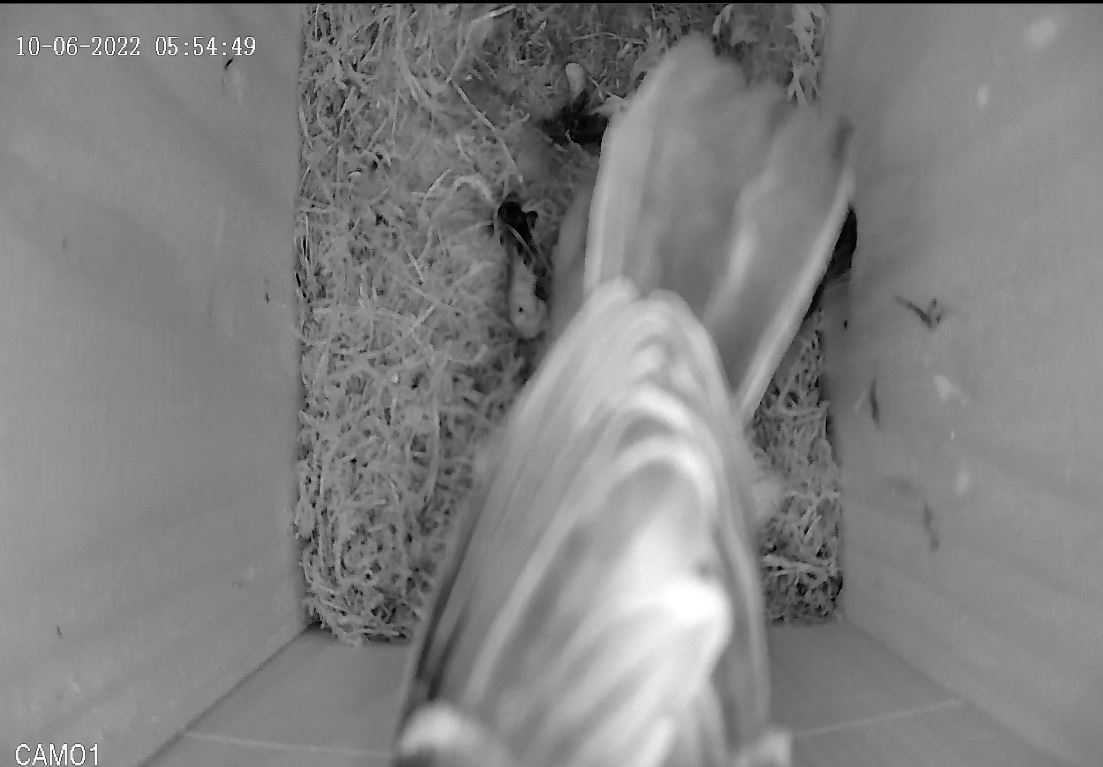
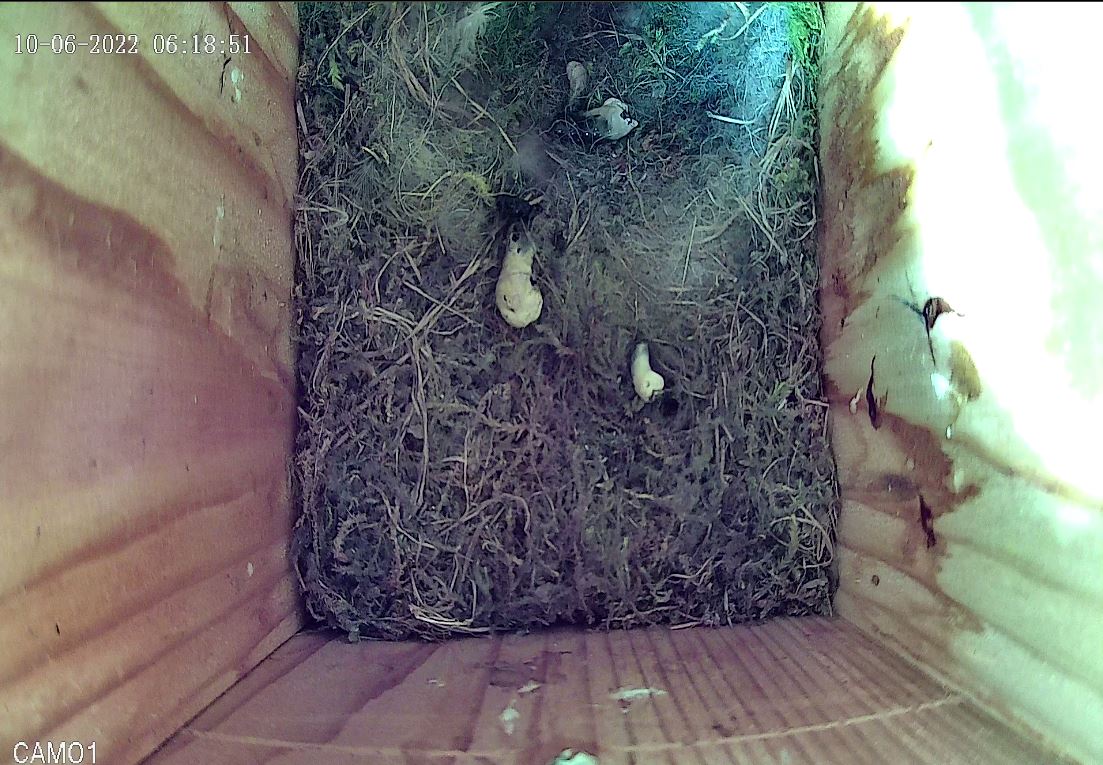
9th June
Still two left - they are looking bigger each day. One has been seen going up to the entrance hole - just waiting clearance from Ground Control?
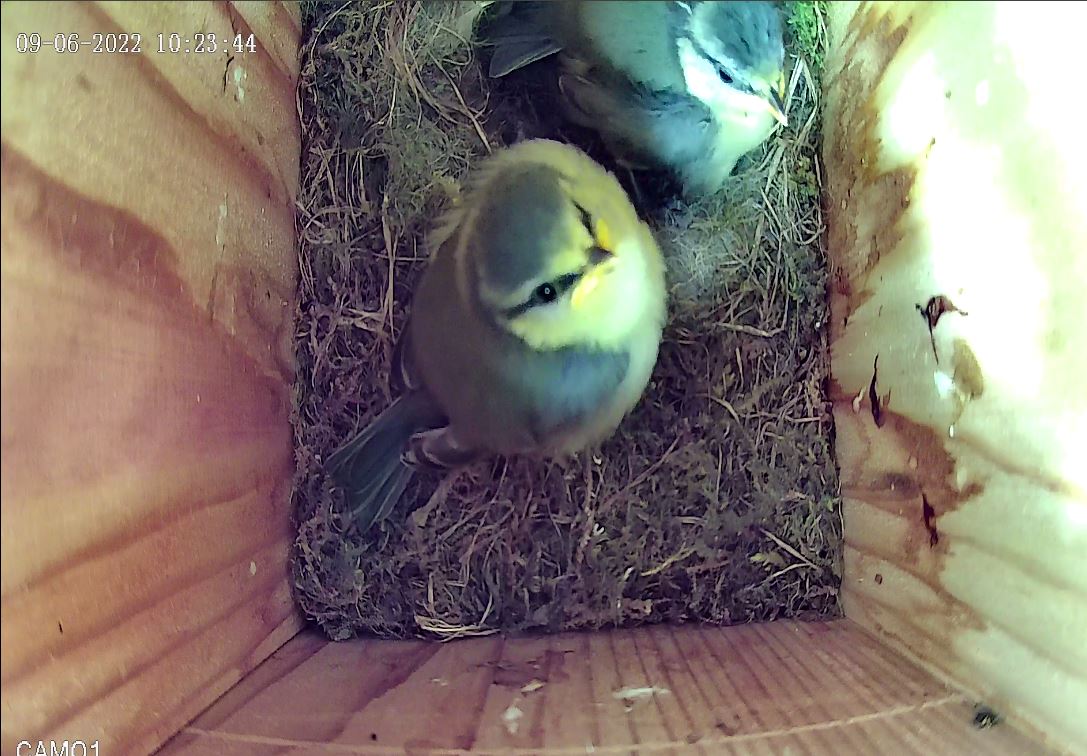
8th June
The last two fledglings are looking healthy and well - preening, wing stretching and making lots of noise. The dead chick has been removed from the box.
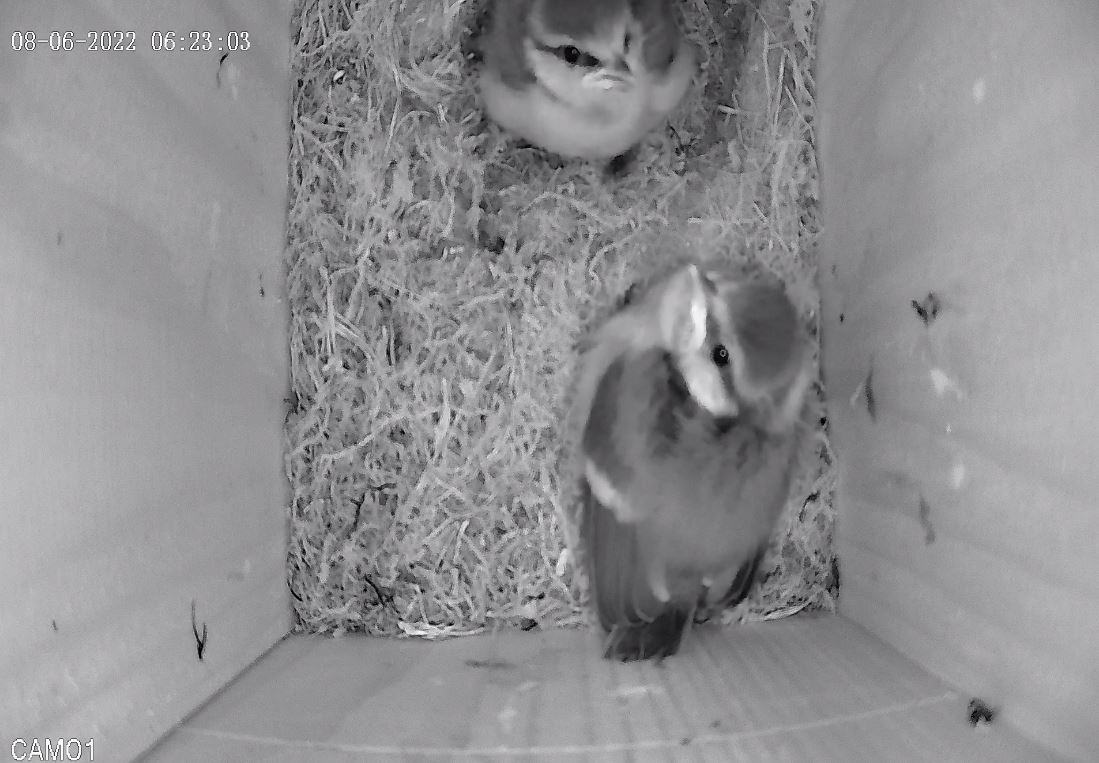
7th June
In June fledglings stay with their parents who continue to feed them for a few weeks after they have fledged. This is a dangerous time for young birds. They need to learn how to find food and avoid predators quickly if they are going to survive. If available, they may take advantage of peanuts and sunflower seeds provided in gardens to build up their strength. Almost two thirds of young Blue Tits will not survive their first year of life, but those that do usually start to breed the spring after they hatched.
YouTube 3 minute film on Blue Tit fledglings
Caerulea and Warwick not only collect caterpillars for the young but also do the house work. If you ever wondered why the nest isn't full of droppings - see the picture below. - as a whit sac is collected. The parents collect the droppings in faecal sacs from their offspring and fly away from the nest.
A faecal sac is a mucous membrane, generally white or clear with a dark end, that surrounds the feces of some species of nestling birds. It allows parent birds to more easily remove fecal material from the nest. The nestling usually produces a fecal sac within seconds of being fed; if not, a waiting adult may prod around the youngster's cloaca to stimulate excretion. Removal of fecal material helps to improve nest sanitation, which in turn helps to increase the likelihood that nestlings will remain healthy. It also helps to reduce the chance that predators will see it or smell it and thereby find the nest. Experiments on starling nests suggest that bacteria in faeces produce volatile chemicals that may provide cues for predators (Wiki)
Here is a very detailed scientific study on faecal sacs.
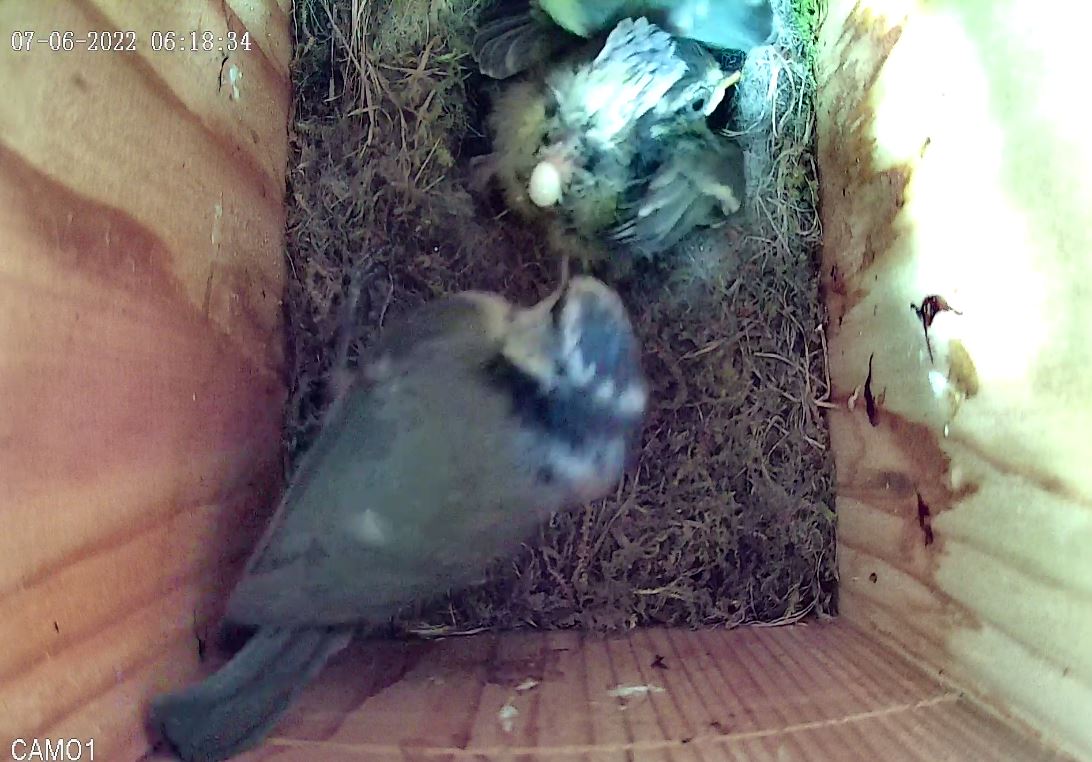
6th June
Just two living chicks left in the nest now - one of the three has died and is lying to the left under the other two.
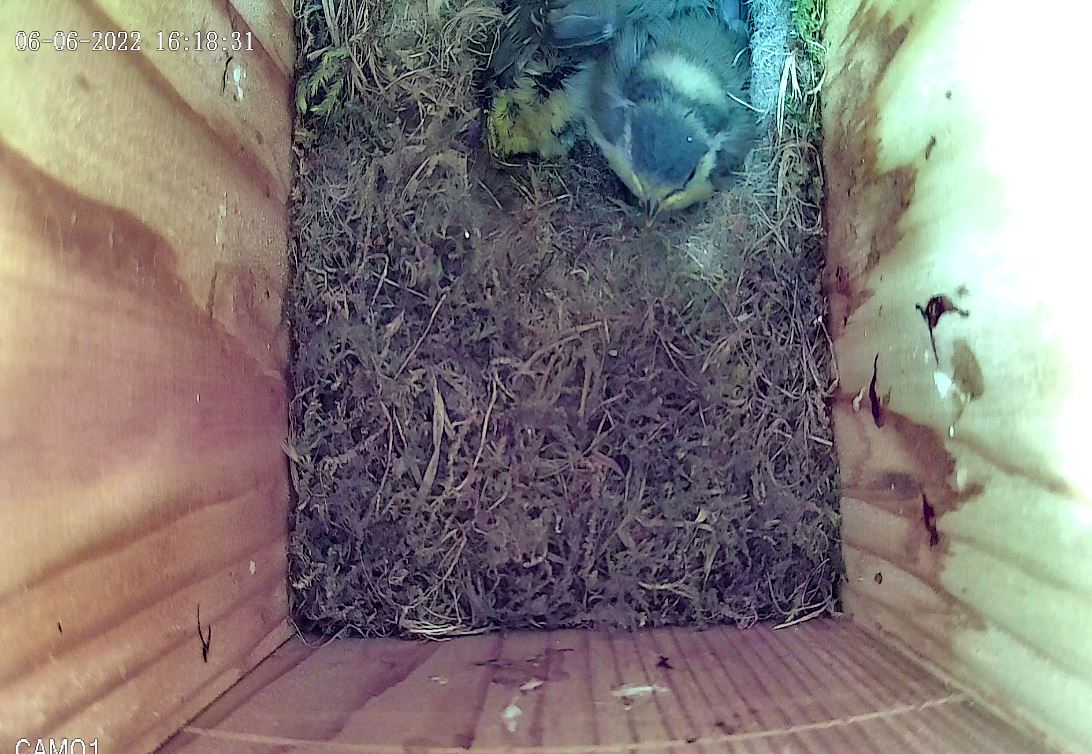
Interesting info. from BBC Wildlife
Blue tits tend to live for around three years. However, the current longevity record for this species is 10 years and three months.
Blue tit numbers have declined slightly in gardens since Garden BirdWatch began. However, it is clear that supplementary feeding in gardens and the provision of nestboxes has benefited the British breeding population.
An average clutch consists of 8–10 eggs, which can exceed a female’s own body weight! Incubation usually commences when the penultimate egg of a clutch is laid, and lasts for approximately 13–15 days.
During this time the male will feed the female while she remains in situ, a process known as courtship feeding, although she will leave the nest occasionally.
Once the chicks hatch, the really exciting action takes place. With lots of hungry beaks to feed, both parents work tirelessly to rear their young, often flying hither and thither, from dawn until dusk. In total, up to 10,000 caterpillars may be needed in order to rear a brood of blue tits.
All being well, the youngsters will fledge the nest around three weeks after hatching.
5th June
Only three chicks left now - one looks poor and hardly moves - lower right
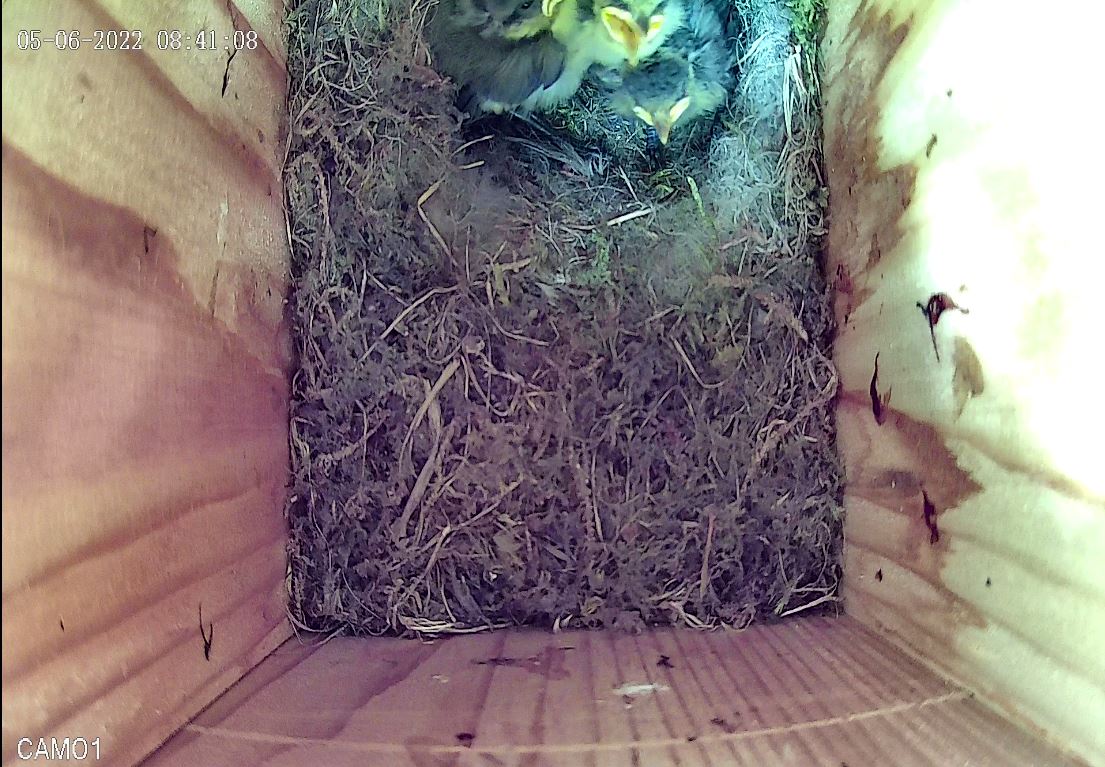
3rd June
At least six beaks wanting food
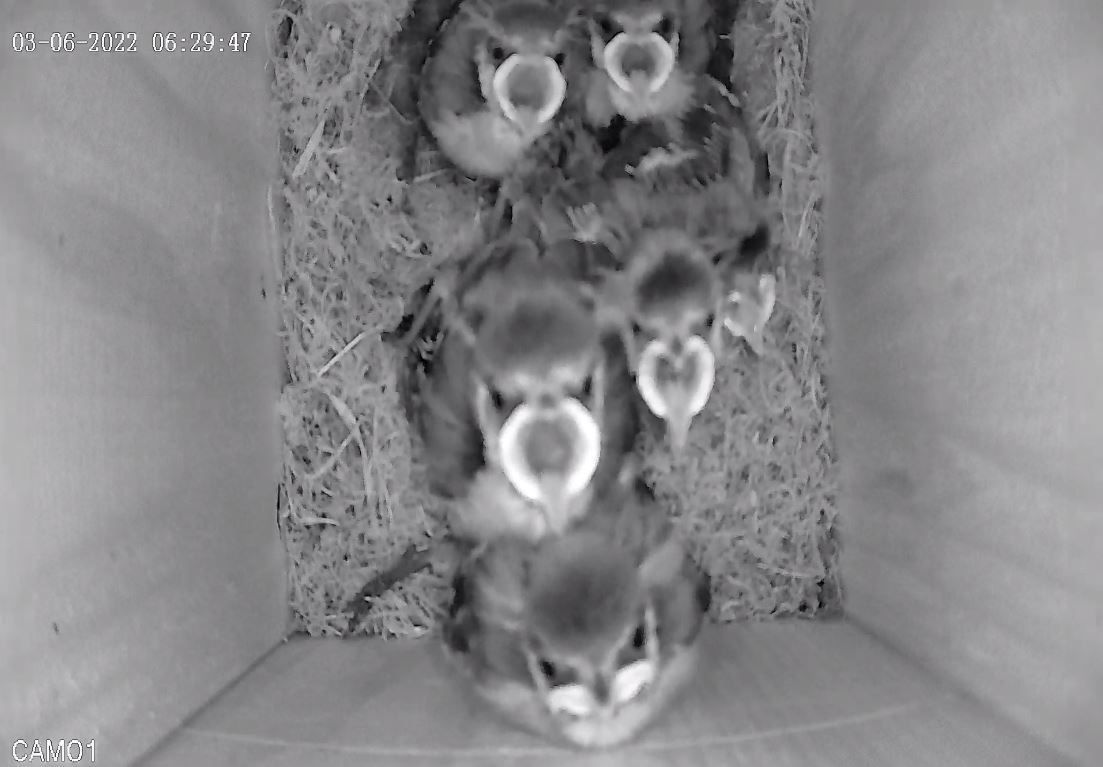
Notes from BTO British Trust for Ornithology
Feeding chicks takes its toll on the parents as they flit in and out of the nest box with juicy fat caterpillars. Each chick can eat 100 caterpillars a day, so to feed a brood of ten, adults need to find as many as 1,000 caterpillars a day. Adults also need to remove the chicks faecal sacks to keep the nest clean. By now the chicks’ feathers are well-developed and they are starting to look like they might be capable of flying. When the chicks are ready to fledge, the parents will call from outside the box, urging them to come out. One by one each chick will poke its head out and make their first tentative flight (usually badly) to the nearest available perch. Blue Tit chicks typically fledge when they are 18-21 days old.
30th May
The chicks are growing feathers and the feeding programme is relentless.
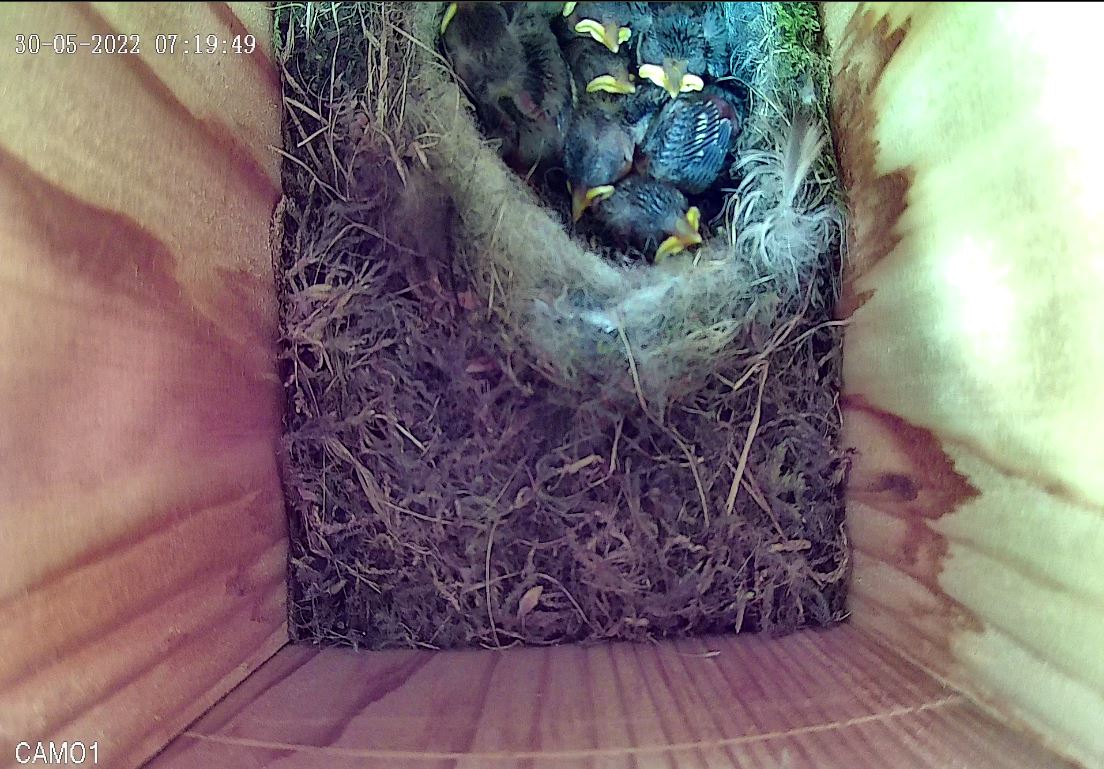
24th May
The adults are not only bringing food in to the box but also removing the chicks faecal sacks to keep the nest clean.
A short video with the full story of another Blue Tit nest box from start to end. 6 minutes
Blue Tits and Great Tits - telling the difference by sound/song.
23rd May
An average clutch consists of 8–10 eggs, which can exceed a female’s own body weight! So our ten is a good number. Incubation usually commences when the penultimate egg of a clutch is laid, and lasts for about two weeks days. Now all ten eggs are hatched the hungry chicks open their huge beaks for feeding. Caerulea and Warwick may collect 10,000 caterpillars over the next three weeks before the chicks fledge.
21st May
The eggs are hatching - two still in eggs.
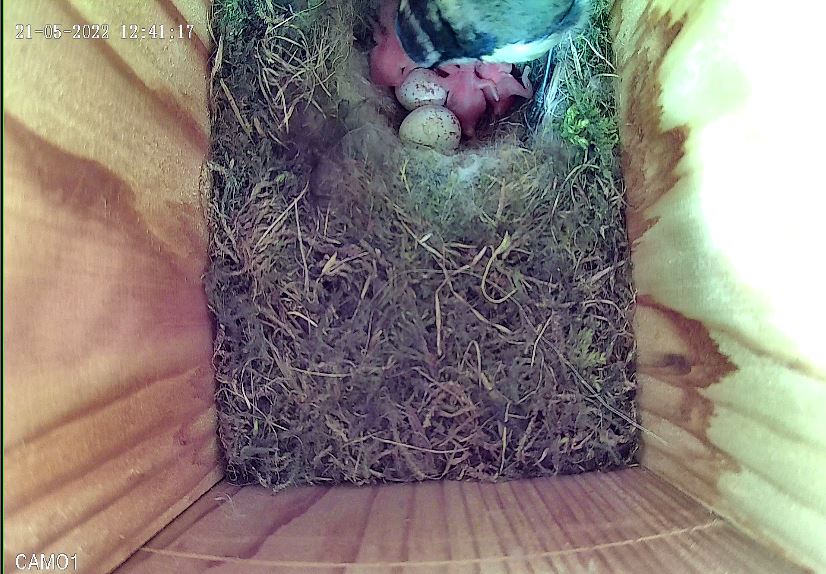
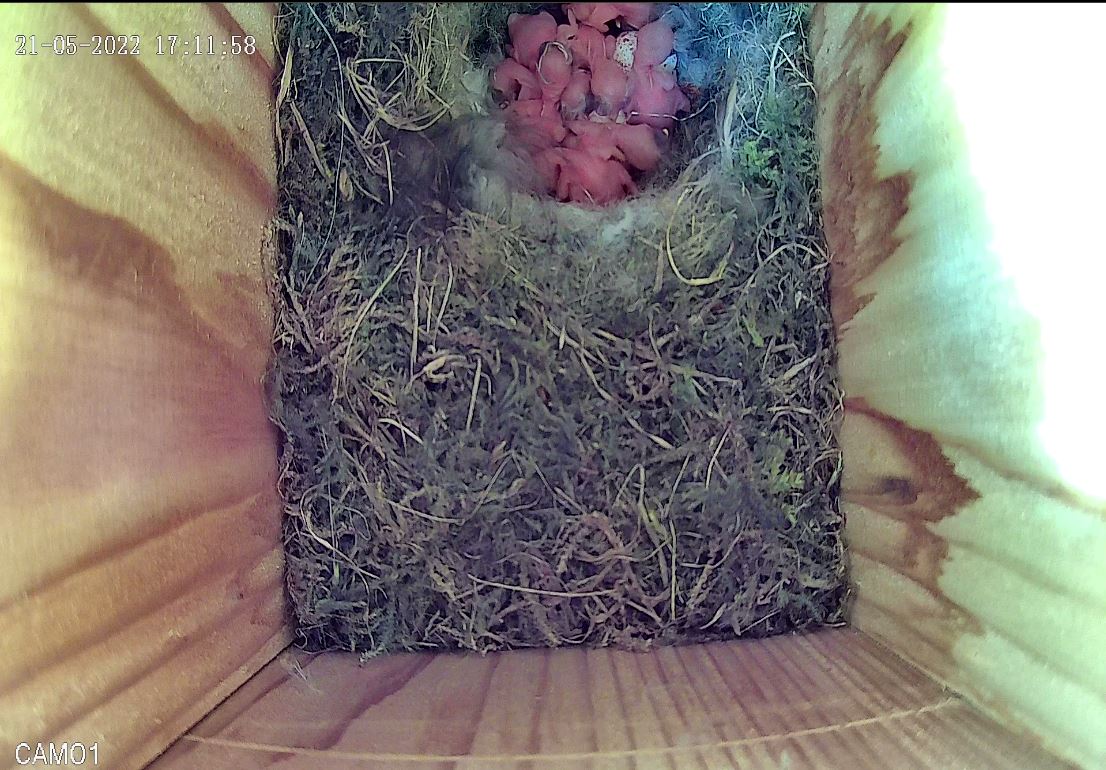
19th May
Ten eggs being incubated.
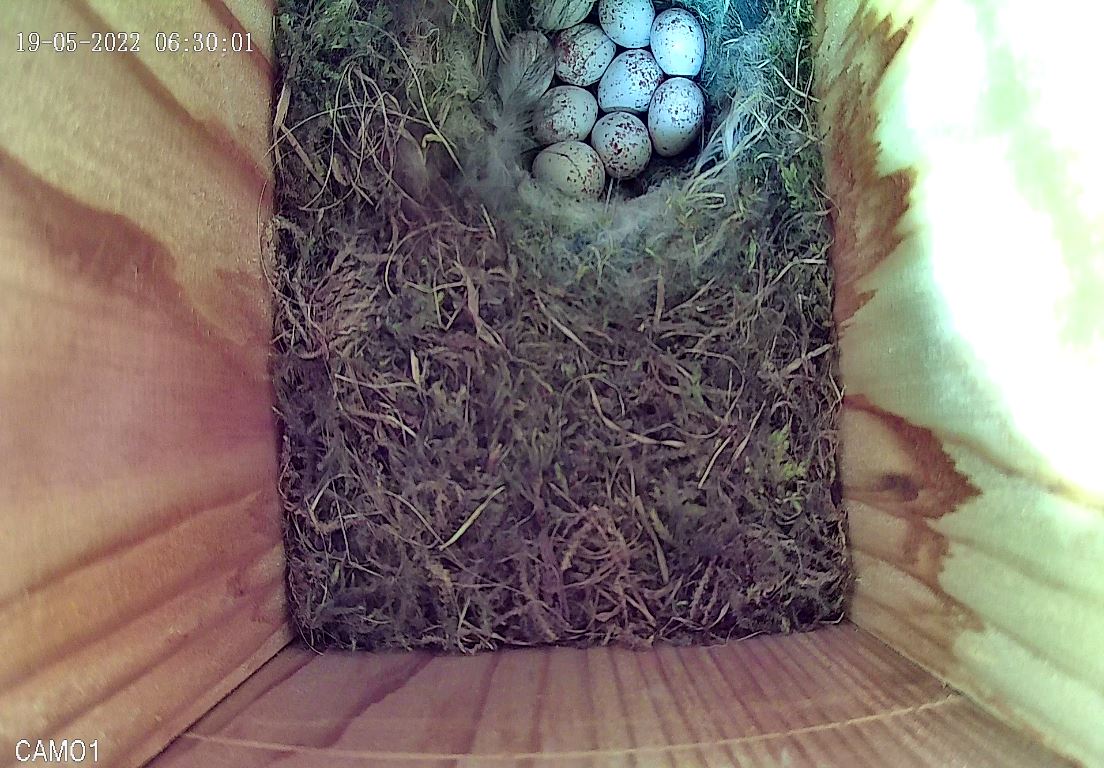
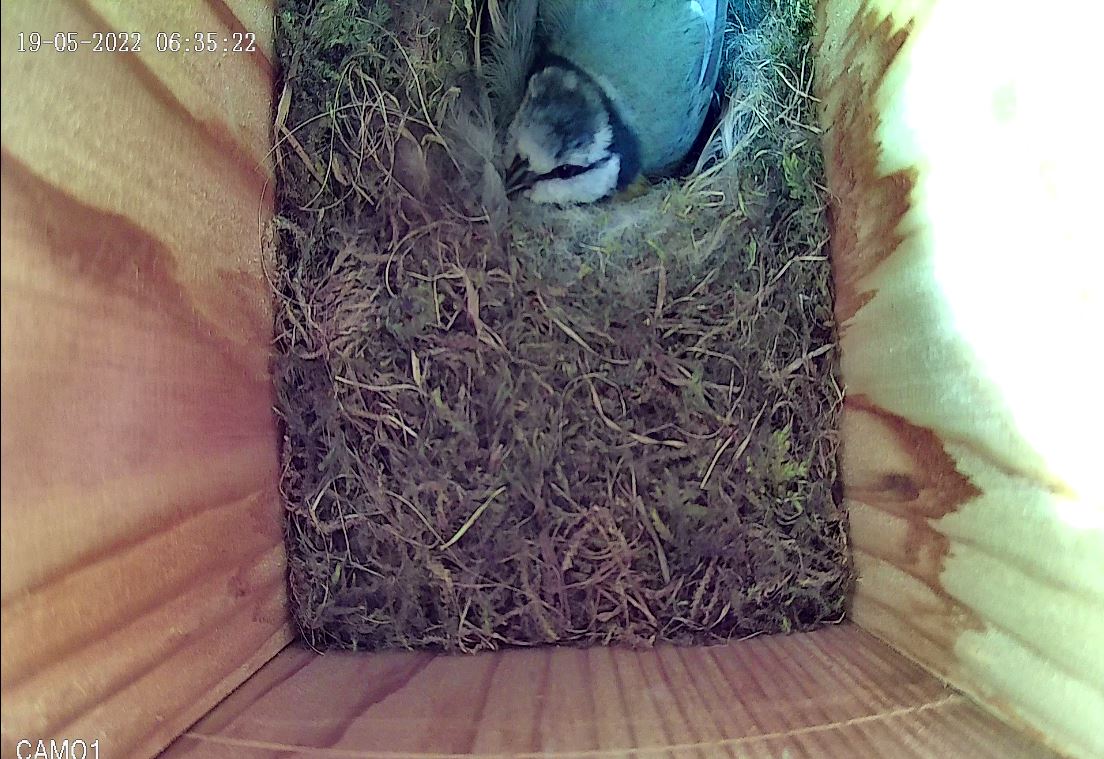
4th May 2022
Tweet of the day...'Because I was wearing a RSPB jumper...'
Incubation (Woodland Trust)
Generally speaking, eggs are usually laid throughout April and into early May. Once the clutch is complete, the female spends up to 15 days incubating, using a featherless area of skin on her tummy, called a brood patch, to keep the eggs warm. Her partner brings her deliveries of food during this time, but she must also occasionally leave the eggs to feed.
Incubation study
A very detailed scientific study into incubation and nest attendance.
3rd May 2022
Some big news
For some days since the last post, Caerulea seemed to be absent again. I was wondering this was 'end of.'
But then on 21st April an egg was spotted. Hooray,
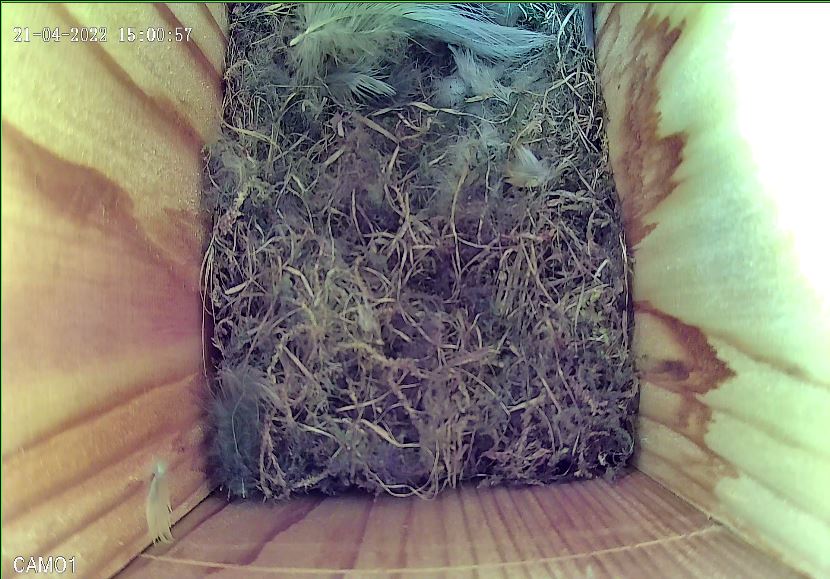
and by 24th April there were three.
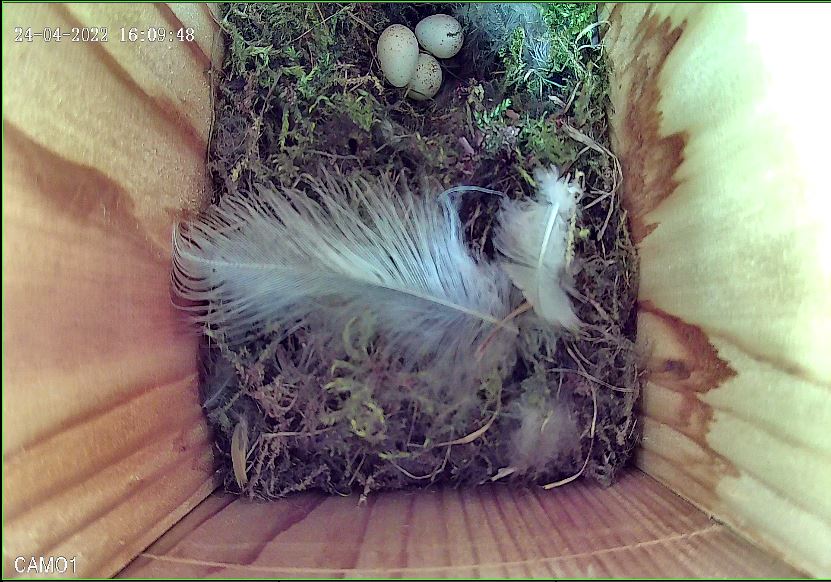
It seems that this is the lot, although she does cover them with feathers at times.
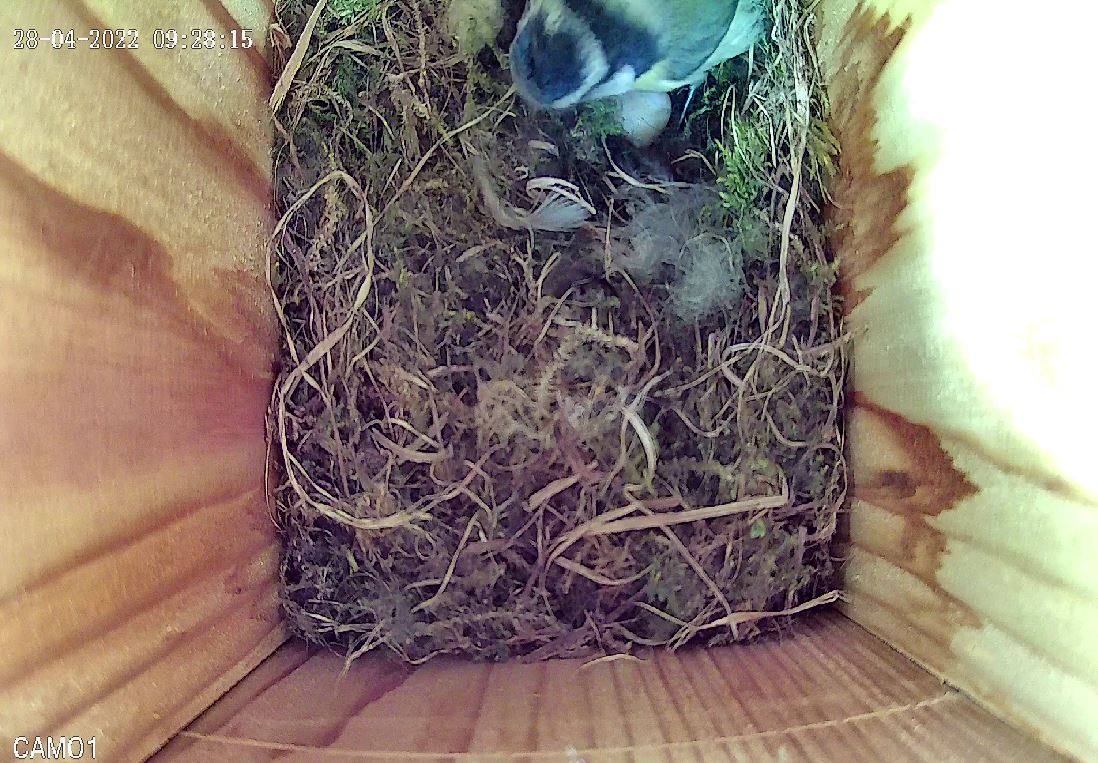
-----
20th April
Caerulea has collected a few more feathers
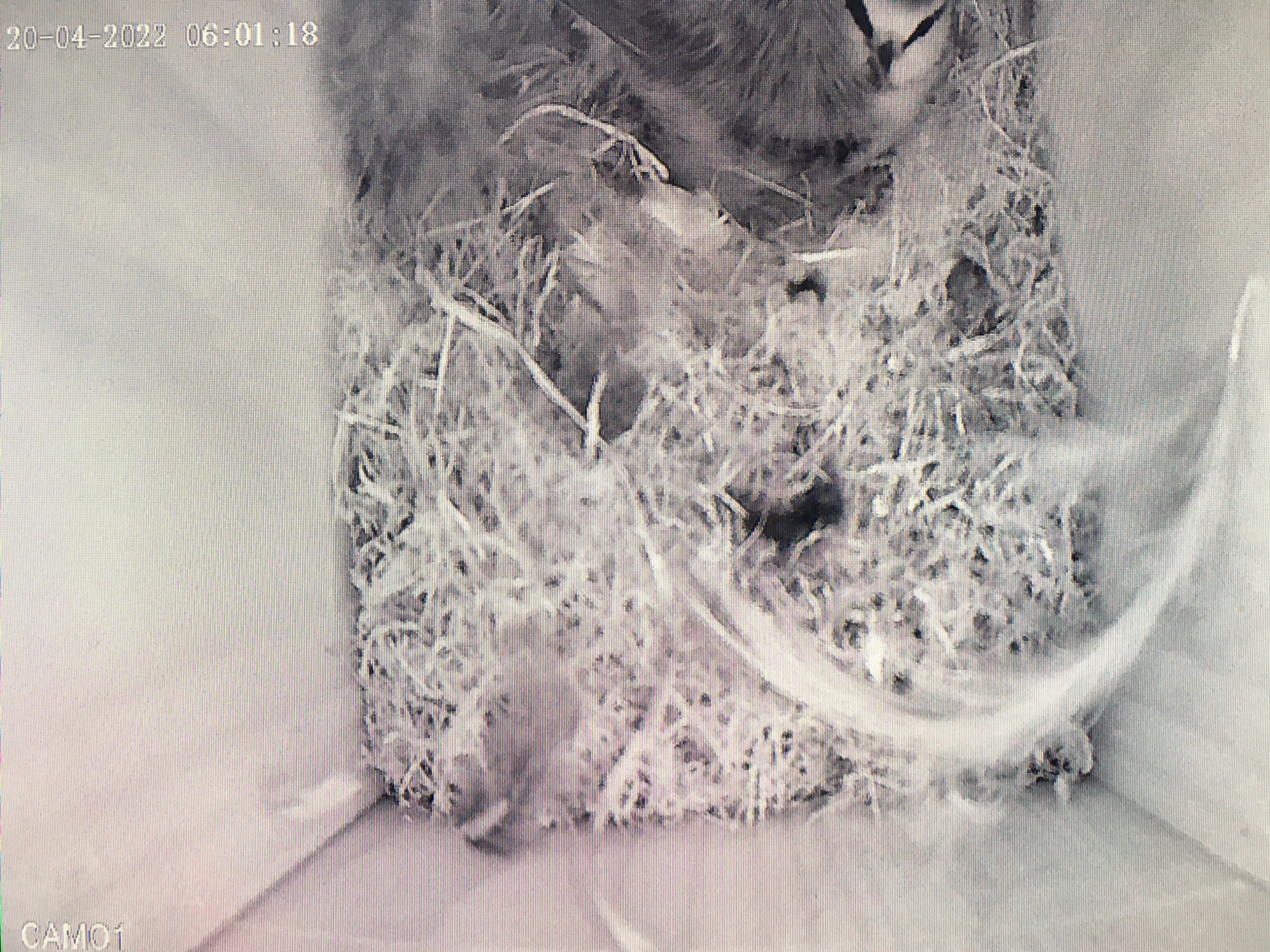
The male and female Blue Tits look identical. (Colne Stour Bird Guide) They can see in the ultraviolet spectrum that are invisible to us and it has been discovered that the male’s blue crown feathers reflect ultraviolet light. Because the more dominant and experienced males reflect more ultraviolet light, it helps the females to choose the fittest partner.
---------
17th April Easter Day
----------
15th April
A few more feathers have arrived.
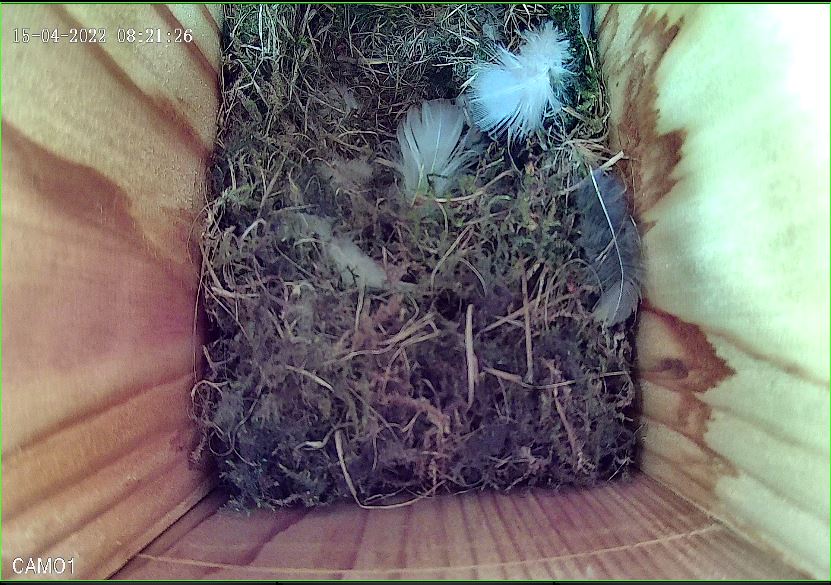
----------
14th April
Worried in the early hours - an empty nest! Every other night Caerulea was seen sleeping. Had the sparrow hawk been?
BUT at 6.30am a Blue Tit arrived...phew.
But was it the male looking for her?
Then both where there... phew again!
Whenever the male comes he feeds the female.
All is well in the box again.
----------
13th April
A Q+A on the RSPB website
Why is a blue tit tapping on our window?
This is a very topical enquiry; one we receive frequently at this time of year (end of March). Although it can seem, from inside the house, that the blue tit is trying to get in, it is, in fact, attacking its own reflection.
This is territorial behaviour and fairly common at the moment as birds claim, and then defend, their breeding territory. This blue tit has chosen its nest site nearby. Seeing its reflection in the window it thinks that another bird is intruding and tries to drive it away by pecking at it. Many birds do this and they will also attack other reflective objects such as car wing mirrors and hub caps.
These activities are difficult to stop. Placing cling film or non-reflective cellophane on the outside of the glass may work but often the bird will move to another window and resume its attack. Soon though, it will be diverted by its busy schedule of nest-building and rearing its young.
Sadly, windows can cause the deaths of many birds. On brighter days, glass reflects the sky or surrounding greenery and birds fly straight at them. They do not realise that it is a solid surface and although some recover, after a short rest, many break their necks and die. A simple solution is to place a few stickers on the glass - bird shapes, especially of a hawk, work well, but it is important to place them on the outer surface for them to be effective.
----------
12th April
Interesting - a first feather has appeared today. I have read that the final stages of nest making includes feathers for a soft bowl for eggs.
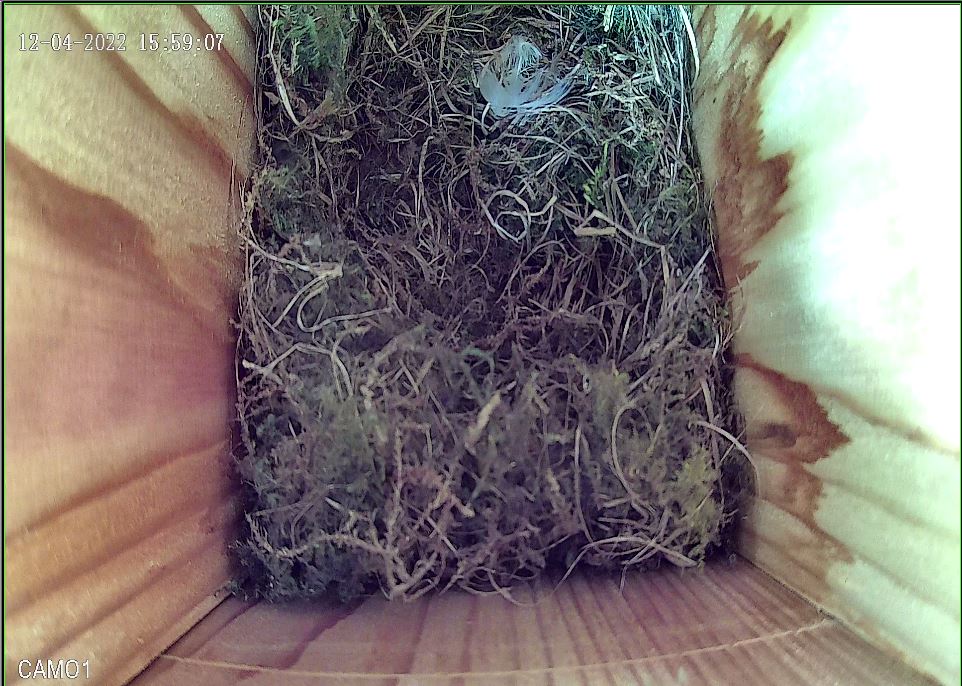
It was about 100 years ago when the ingenuity of Blue Tits raiding the cream on top of doorstep milk bottles was first recorded. By the 1950s they were recorded across the entire UK piercing the aluminium foils and successfully getting to the energy-rich cream, gaining a ‘viral’ fascination amongst the public. They were even known to identify which colour bottle tops indicated skimmed milk so they could avoid those, and to follow milk floats awaiting the delivery! The lack of doorstep deliveries these days means the behaviour is now relegated to folklore.
Early Morning- Caerulea always sleeps in the same corner.
She will be up soon.
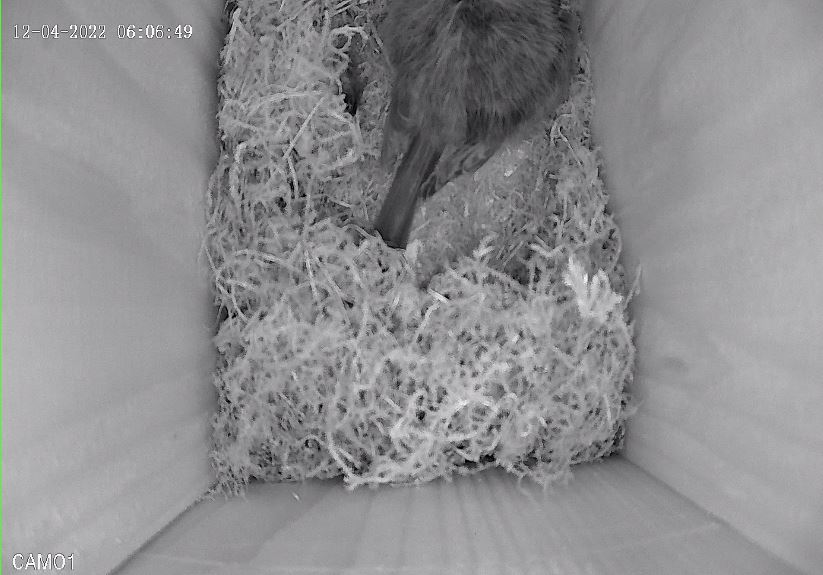
She was up a few minutes minutes later and one minute earlier than the day before. Time for breakfast.
----------
11th April
Have you ever joined the Big Garden Birdwatch with the RSPB? Here are this year's results and a prompt to join next year.
----------
10th April
Official sunrise was 06.22 and Caerulea woke up and ten seconds later flew out of her box at 06.15 on this bright sunny morning. The early bird catches the caterpillars.
Blue Tits will nest in any suitable hole in a tree or box. I read that Blue Tits return to the same hole the next year, if they survive of course. The typical lifespan in Britain is three years although the maximum recorded age is over 10 years. Only one third of the juveniles will survive their first year. When one pair dies another moves in using the same hole. Female blue tits perform all of the incubation, whist the male feed. To date I have spotted this three times – I don’t watch all the time!
British Trust for Ornithology
How to make your own nest box
Start this year for a chance of connecting with nature next year.
...Or you could buy one. I bought one from Garden Nature to purchace one with a camera.
----------
8th April
Link to BBC page on a video of a Mallard story
----------
6th April
The female Blue Tit builds the nest alone, with no help from the male. Very occasionally a second Blue Tit has been in the nest at the same time. She collects moss from garden lawns and forms it into a cup. The nest is completed as it is lined with soft feathers, fur or wool. Blue Tits can build a nest in a few days, but generally it takes them between one and two weeks. Caerulea has been going for a good week now.
---------
4th April
A few Blue Tit notes
Blue tits have small blue caps with a white head and a black eye-stripe. They also have yellow underparts and a bluish back, becoming brighter blue at the wings. Male and female look similar but juveniles are duller in appearance, with no blue cap or white cheeks. The scientific name of the blue tit is Cyanistes caeruleus. According to data from 2016, there were 3.4 million pairs of blue tits in the UK. Blue tits tend to live for around three years. However, the current longevity record for this species is 10 years and three months.
Also today, two Blue Tits were seen locked in battle with each other on the ground. They were so focused that I nearly stepped on them. They flew up into the air a couple of times but fell to the ground contiuing their fight. I looked up 'Blue Tits aggression'... Here is the story recorded in the Daily Mail by someone who saw the same.
----------
31st March
A five minute video
How Are Eggs Made? | Attenborough's Wonder of Eggs | BBC Earth
Caerulea wants to grow up to be an Albatross
BTO British Trust for Ornithology webpage
Hazel McCambridge walks through the diary of an average Blue Tit during the breeding season.
A Blue Tit Diary
This gives us the rough timing for the nest.
Cumbria Wildlife Trust
You might like to see a slightly larger nest.
The Ospreys at Foulshaw Moss Nature Reserve have just returned from Africa and are live on a webcam.
Caerulea says 'Thanks for the 84 views of my webpage today '.
----------
30th March
A lovely glimpse of Caerulea making her nest in a Box in Warwick Bridge. The nest is mostly moss but in this video you can see her wondering what to do with a leaf. A second Blue Tit (let's call him Warwick) has been seen in the box at the same time.
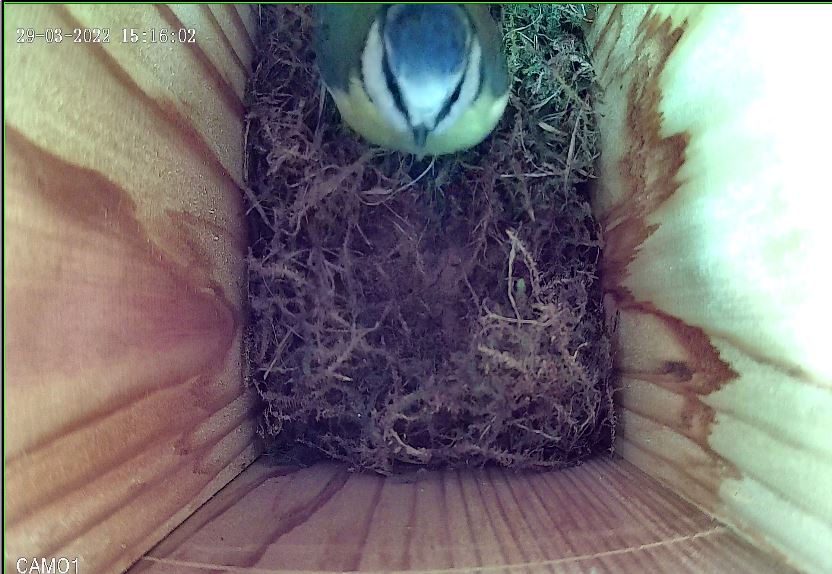
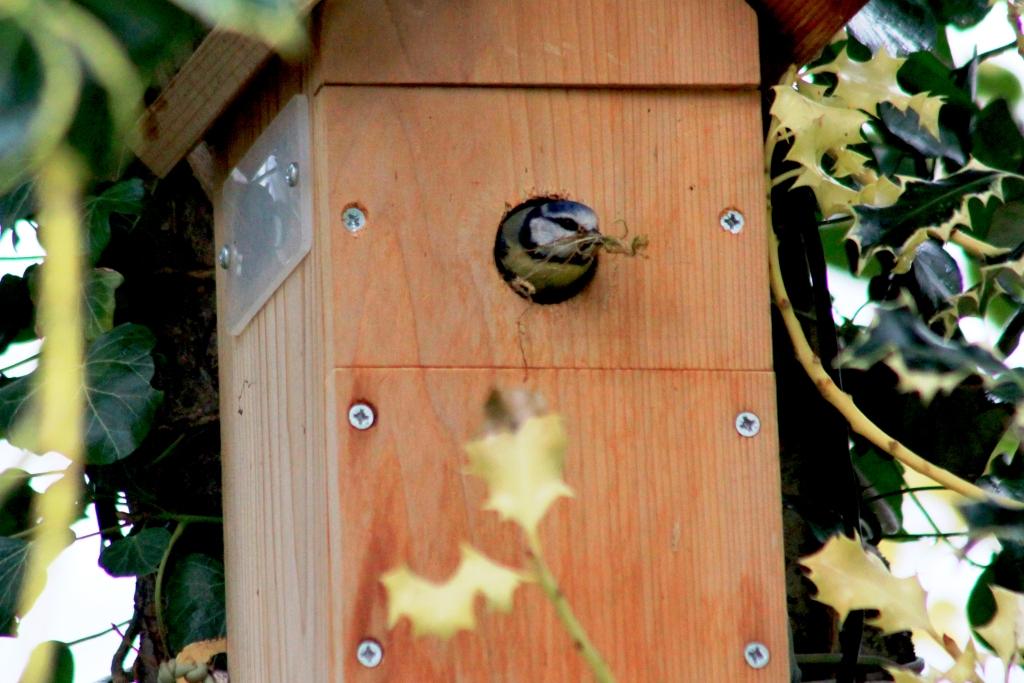
----------
28th Feb 2022
A Great Tit is seen asleep in the box
Sometimes it is all fluffed up
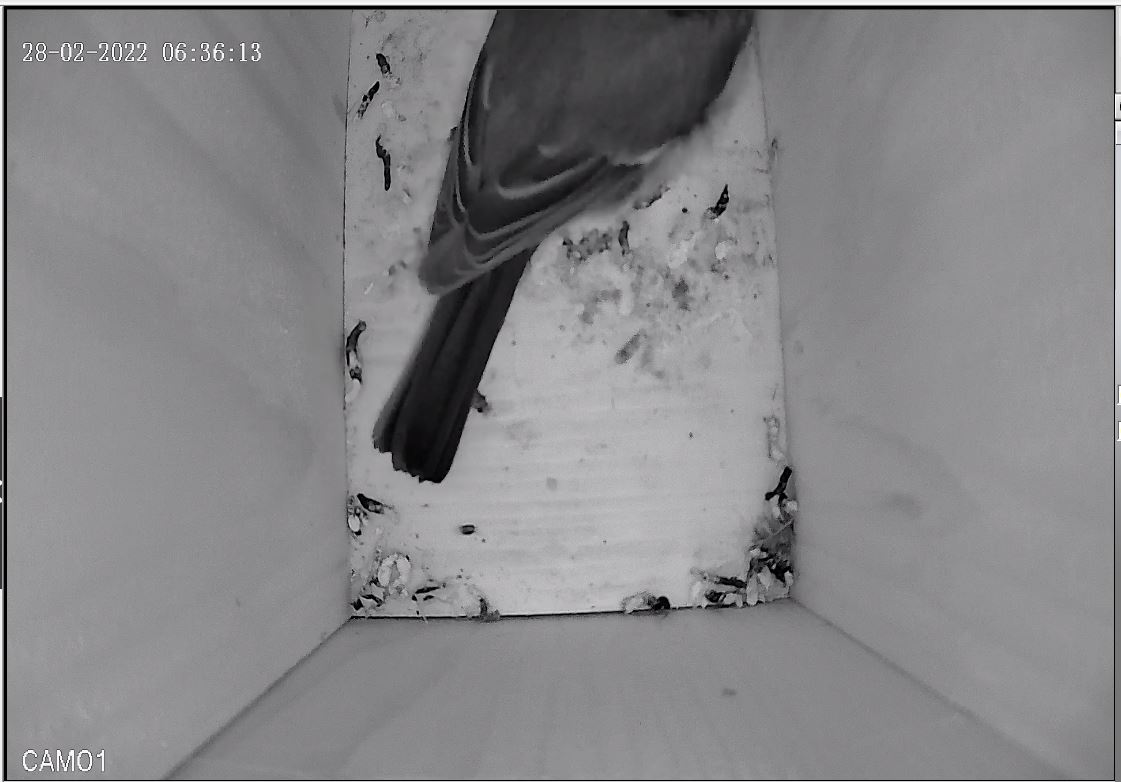
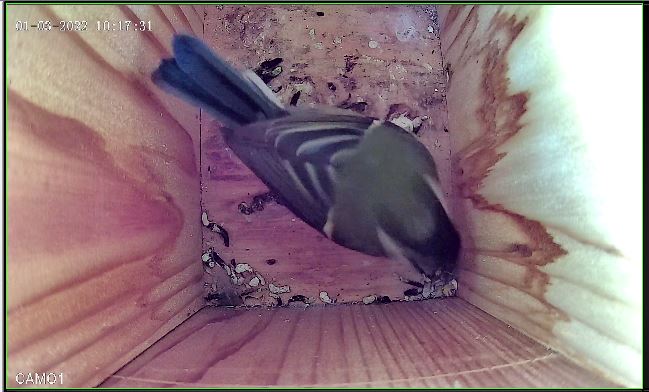
21st Feb 2022
The box had been used as a winter refuge, it was full of 'evidence'
So here is a cleaned up floor.
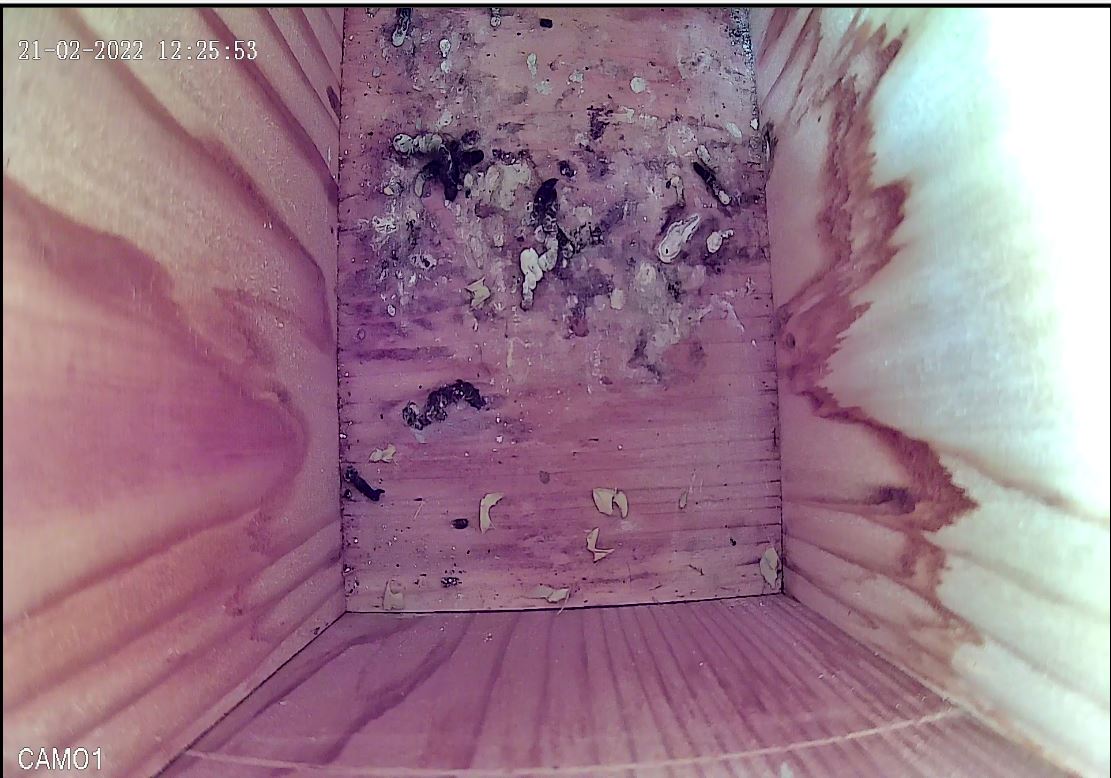
17th April 2021
The nest box goes up - too late for this season.
For nature, patience is needed. Just another year.
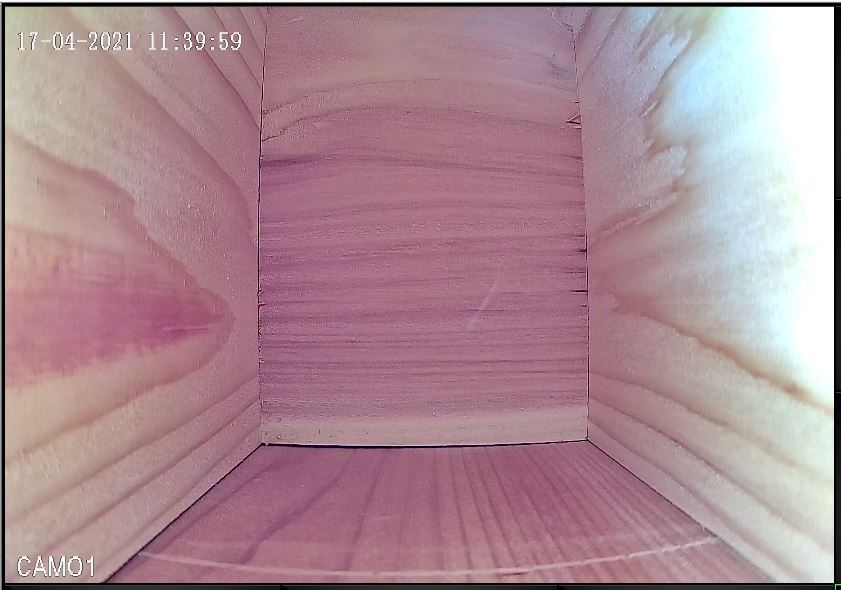
----------
The story of Caerulea on her nest fits with the CACAO vision of Eden Wild Goose Nature. Moving us from Curiosity to Appreciation and then Celebration of Nature, taking Action to care for it an giving us an Opportunity to share with others. The vision on the Eden Churches includes the nature and environment theme 'Tread Gently'.

The Bird Box Camera was funded with a Fellfoot Forward Community Grant from the North Pennines ANOB Partnership.